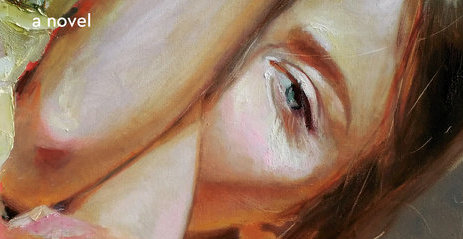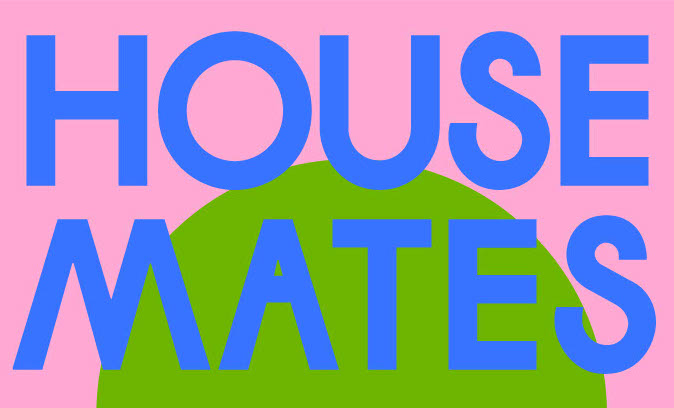interviews
Lust, Rivalry, and Ambition Culminate in a Betrayal at an Elite Art School
Antonia Angress uses the queer female gaze to explores capitalism, wealth, and class in the art world in "Siren & Muses"

Set on the idyllic New England campus of an elite art school called Wrynn, and situated against the backdrop of the Occupy Wall Street movement, Antonia Angress’ debut novel Sirens & Muses is an exemplary depiction of what can occur at the intersection of art and adolescence. This coming-of-age novel follows the lives of four main characters on a journey of love and lust, desire and rivalry, ambition and betrayal. Louisa Arceneaux, the timid but observant scholarship student with real potential, doesn’t know what to make of her new roommate, Karina Piontek, the striking but intimidating prodigy of wealthy art collectors. But Louisa can’t help but be enticed by Karina when she discovers her own face drawn within the pages of Karina’s notebook. On the other side of campus, Preston Utley, the anti-capitalist blogger who’s not afraid to ruffle a few feathers, can’t resist goading visiting professor and political painter, Robert Berger, whose own reputation is hanging by a thread. After Preston puts himself on Robert’s radar through a social media shit post, the washed-up artist is determined to not be upstaged.
In time, each of their paths are unexpectedly thrust out of Wrynn’s sheltered college campus and into the cutthroat art scene of New York City, where they find themselves fighting not only against the art world’s elite and the grinding gears of capitalism, but also each other in order to make a name for themselves.
I had the pleasure of connecting with Antonia Angress over Zoom where we discussed what it’s like to exist in liminal spaces, how class impacts art and who gets to create it, the complexity of bisexuality, the queer female gaze, and more.
Sam Dilling: In a class assignment, the Wrynn students are instructed to “paint home.”Louisa Arceneaux, one of the novel’s main characters, who has just left her home of Louisiana only twelve days prior, paints a somber scene of Lake Martin at dusk. Later in the novel, Louisa looks back and grapples with the fact that she’s had to move away from home in order to be able to “see it clearly.” Have you had a similar experience?
Antonia Angress: That question is interesting to me because home, to me, feels very complicated. I’m an American citizen but I grew up in Costa Rica and I attended a French international school from K through 12. Growing up, I was constantly shifting between three different languages and three different cultures. As a result, I’ve always felt rootless and, in a way, stateless, even though I am a citizen of a country. I’ve lived in a lot of different places, but nowhere has ever really felt like home. I think home, to me, is more people than it is a place. Added to that my family is Jewish, and my grandparents were Holocaust refugees. Jews are notorious, historically, for being this stateless, rootless people—this ethnic group that’s always having to flee and is never able to put down roots.
That experience is obviously different than for someone like Louisa, who does come from a persecuted people but whose family was able to put down roots and become embedded in a place. But I do think that, regardless of whether you have a strong sense of home, it’s this universal experience to grow up and leave your family and begin to see them differently than when you’re a child. For Louisa, that’s true.
SD: A large portion of the novel is set against the backdrop of the Occupy Wall Street movement while America is in a recession. This movement informs the lens through which the novel is viewed, particularly as it relates to the student body of Wrynn College and who gets to create what. The Occupy Wall Street movement is also the point around which one of the main rivalries in the novel orbits. Did you always know you wanted to include the movement as part of the novel? Was there something about that movement specifically that appealed to you?
AA: It happened pretty organically. Occupy Wall Street happened when I was in college—in 2011, I was a junior. [The movement] was my first experience with American protest culture. It resonated with me because it encapsulated a lot of the anxieties that I and my peers [were] feeling as we came of age into the great recession. Even though it fizzled as a movement, I think it had and continues to have enormous impact on today’s progressive politics. I think we wouldn’t be talking about things like universal health care or universal basic income were it not for Occupy. Occupy pushed a lot of people to the left, myself included.
As I wrote the story, Occupy became a bigger part of the narrative. Partly because at the time, it felt all-encompassing. A lot of the Occupy stuff that I saw on campus was, in a lot of ways, juvenile and performative. That was something I tried to put in the book for the comedic factor, but also because I wanted to illustrate different aspects of the movement as I perceived it.
There were people participating who made it feel very urgent and important and compelling; and then there were people who were just camping out at the university where their parents paid $50,000 a year for them to attend.
SD: That economic inequality is on display throughout the novel. Louisa is on scholarship and works in the school cafeteria, where we see her weighing the cost of art supplies against the cost of meals, while Karina Piontek, Louisa’s roommate, and Preston Utley, Karina’s boyfriend, both come from wealthy families. For Louisa, money, or the lack thereof, impacts her potential future as an artist. It becomes obvious early on who gets afforded the opportunities to create art at all.
AA: I think art is hugely informed by class. Art takes time. In the case of visual art, it takes material resources: paints, canvases, sculpture materials, paint brushes. Most people who go to art school have had some prior instruction. Those are all things that cost money. To me, it seems disingenuous to leave that at the door. Add to that, the art world itself is driven by money [and] the spending power of collectors, who are often millionaires and billionaires. Many collectors, I’m sure, deeply love art, but sometimes you’re buying this painting because it’s a stock pick. It’s an investment. I think it’s a problem when culture is produced by one group of people. When marginalized people can’t access the space, or the resources that they need to create, It makes for a culture that’s flat and homogenous and that ultimately results in an echo chamber.
I also think it’s connected to geography, which is connected to class. You can probably tell through the novel, I get very annoyed at this idea of regional art or regional literature. I think art and literature in the U.S. are very coastal. Art coming out of New York or LA is considered art with a capital A, but art coming out of New Orleans, which is a place where I used to live and has a very vibrant art scene, gets called “regional art.” But New York and LA are regions, too. All art is regional. That bothers me because New York and LA are some of the most expensive cities in the world, so the people who can access them, those social networks [and] professional networks, are people who have the capital to do so. It comes back to class, and an elitism that at its core is provincial.
When I was a younger writer, I struggled with the idea that I needed to be in a certain place to be a writer, and that real writing came out of certain places and not others. If there’s one thing that [I hope] people [take] away from this book, it’s the knowledge that there’s no right way or place to be an artist. I say this is a writer who has been able to forge a writing career in the Midwest, which is decidedly unfashionable. Minneapolis is not what people think of when they think of the capital of art or literature, but it’s a place that has been nurturing for my work, because it’s a place where I don’t feel like I’ve had to struggle to forge a career.
SD: At the core of this novel is a bisexual love triangle between three of the novel’s main characters—Louisa, Karina, and Preston. The POV weaves us into and out of these relationships, which begin on the Wrynn college campus and progress through the later acts of the book which take place in New York City. Did you always know you wanted to explore this type of relationship in a novel?
AA: That was another thing that evolved over the course of the novel, I definitely didn’t sit down and say, “I’m gonna write a bisexual novel.” I identify as bi, but I didn’t publicly come out until I was in my mid-20’s. For a long time, it was something that I had a lot of shame and anxiety and confusion about. The period of my life when I was working on the novel—the first half of my 20s, and inching up to 30—was also a time when I was coming to terms with my sexuality. It felt very natural to me to explore the feelings I was having, and the questions I was asking, through my characters.
There’s no right way or place to be an artist. I say this is a writer who has been able to forge a writing career in the Midwest, which is decidedly unfashionable.
Once I decided it was going to be a bisexual novel, that was a creative breakthrough. I was interested in writing about that experience, because there’s not a lot of fiction that directly addresses bisexuality. I feel like we’re living through a boom in fantastic queer fiction right now, but there’s not a ton of writing about not being quite straight, and not being quite gay. I’m someone who spent a lot of time in liminal spaces—between languages, between cultures—just because of my upbringing. I was interested in excavating it and naming what I felt on the page.
When I was younger, it literally did not occur to me that you could be bi. You either liked boys or you liked girls, because those were the only two depictions I’d seen in literature and movies.I was living in a very Catholic country. My family is pretty liberal and we’re Jewish, but I was in that shame-y environment. I honestly think if I had read one book with a bisexual protagonist where it was presented as not something shameful, then that would have saved me many years of grief and anxiety.
SD: Your novel was recently featured on Electric Lit’s list of “The Most Anticipated LGBTQ+ Books for Summer 2022,” but even on that list, none showcased bisexuality so specifically as your novel does. Is there anything you hope your novel lends to that conversation?
AA: I hope more people who privately identify as bi talk about it, because there’s no one way to be queer. One thing that’s been interesting to me, as a straight-passing queer person, is I’ve met many other women who identify as queer and also ended up in very happy marriages to men, but feel like there’s this part of their identity that’s hidden. Which is a way I think a lot of bisexual people in straight relationships feel. I hope there’s more conversation about that experience and how strange and disorienting and joyful it can be.
SD: On the page, we see that stark difference in these relationships. The romantic dynamic between Lousia and Karina is much different than the romantic dynamic between Karina and Preston. What was important for you to depict?
AA: Being attracted to a man and being attracted to a woman are different experiences, at least for me. They feel different. I think when you’re bi and when you’re in a relationship with a man, which I am, it’s easy to follow a script. We know what a heterosexual relationship is supposed to look like because we’ve been bombarded with cultural depictions of it. It’s easy to fall into a role that’s already been written for you.
That’s something Karina struggles with in the novel. Between two women, there’s less of a prescribed narrative. Or at least the narrative hasn’t been etched into the collective consciousness as deeply as straight narratives. There’s a lot more freedom there and a lot more negotiating power dynamics, which I wanted to depict. These two women who, at various points in their relationship, have a different kind of power over the other and where the power dynamics are constantly shifting.
SD: We see those power dynamics on display when Karina eventually sits as Louisa’s model. When that relationship is explored with a male character and a female character, the dynamic is much different than when it involves two females. I’m curious how that applies to what we refer to as the male gaze. What happens when we look through a woman’s lens instead?
AA: A lot of it goes back to what I was saying about prescribed narratives. If you’re a woman growing up in the West, the male gaze is ingrained into your consciousness. There’s this quote by John Berger that I love that goes, “Men look at women. Women watch themselves being looked at.” There are many moments in the novel where Karina, in particular, is experiencing herself through a man’s gaze. It’s constricting, but she gets pleasure out of it.
‘Do I want her? Or do I want to be her?’ That’s a dynamic that is embedded in the female gaze and, particularly, in the queer female gaze that can be as fraught as it is pleasurable.
With regards to the female gaze, I think it’s untethered from that straight-men-look-at-women narrative. There’s a lot more freedom in it and it takes for granted the woman’s agency. That’s why a movie like Portrait of a Lady on Fire—which was hugely influential for me and for this book—is so powerful because it illuminates an alternative to all these narratives that we’ve been fed.
[I’ve] been a model for my husband and many of his art pieces. For me, it’s never been anything but a joy to be able to collaborate with him like that. But that male artist, female model narrative is something we’ve seen 1000 times before. It’s easy to inhabit that role, because I know what it’s supposed to look like. One thing I wanted to explore with the female gaze is experiences that I’ve had with women where I look at them and I’m attracted to them. But there’s also this rivalry or jealousy or competition that’s mixed in with the attraction. Like, “Do I want her? Or do I want to be her?” That’s a dynamic that is embedded in the female gaze and, particularly, in the queer female gaze that can be as fraught as it is pleasurable. It’s what I wanted to explore and contrast with the male gaze—what it’s like to experience both. To feel joy and pleasure at both, but also feel scared or constricted by both.
SD: Speaking of that duality, I feel like we also see that in how you explore male ego versus female ego. In the novel, the men’s egos, particularly Preston’s and Robert’s, seem to be more on display externally, whereas the women—Louisa, Karina, and even Ines—are much more subtle and reserved and nuanced in their displays.
AA: Sometimes I wonder if part of that is because it is socially acceptable for men to be outwardly egotistic. But when women do it, there’s a backlash. I can think of women writers, or women artists, who’ve been accused of being arrogant or egotistical for being secure in their abilities. I wonder if women’s ego often turns inward-facing because there’s no socially acceptable outlet for it.









